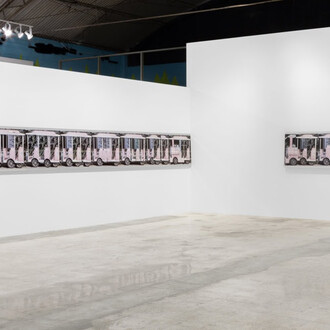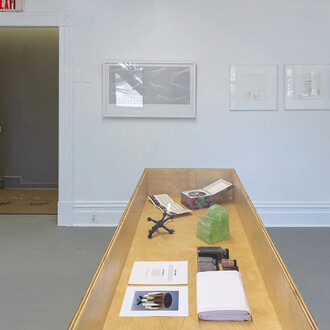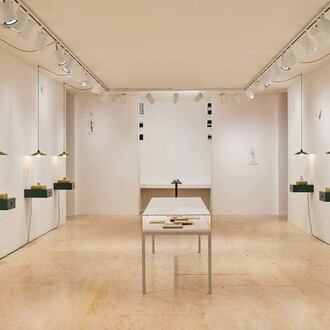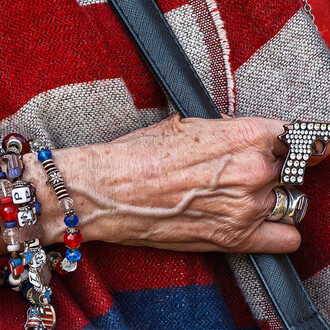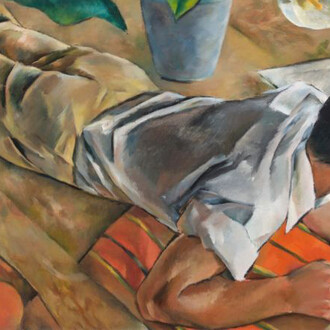In the autumn of 2012, the display areas of the former Sant’Agostino Hospital in Modena will host a major exhibition on the work of Edward Weston (1886 – 1958), the American artist considered one of the greatest masters of 20th-century photography. After more than 15 years since the last solo exhibition of his work in Italy, some of his most renowned black & white images will be on show, tracing his ceaseless research into the photographic medium, and highlighting the striking modernity of his outlook. Promoted by Fondazione Fotografia and Fondazione Cassa di Risparmio di Modena, with support from UniCredit and curated by Filippo Maggia, the exhibition will be inaugurated during the festivalfilosofia (14th – 16th September 2012), the main theme of which in the 2012 edition will be ‘Things’.
The exhibition itinerary covers all the themes dealt with by the famous American photographer, from his nudes to his landscapes, via a gallery of portraits and ‘objects’ – from his famous peppers to his indigenous toys – which the artist turns into surrealist and postmodern icons. Often compared directly to painting and sculpture, Weston’s photography is the result of his continuous search for purity, in his compositional forms as well as in the almost maniacal quest for perfection in his images. The artist examines the very quintessence of his objects, raising them to the level of visual metaphors of the very elements of nature.
110 original photographic works will be on display in order to trace the career of the photographer, shot between the early ‘20s and the ‘40s, mostly on loan from the Center for Creative Photography in Tucson, where the largest archive of the artist’s work is held. Weston’s photographic prints – whether made by the artist himself or under his direct supervision – in fact constitute a fundamental element of his work, his small or medium-sized contact prints, in which no manipulation of the image is permitted. Every detail – described with absolute clarity – helps to define his own notion of perfection, examining the very essence of the subject and the sensations that it is able to transmit.
“This retrospective on Edward Weston,” Andrea Landi (President of the Fondazione Cassa di Risparmio di Modena) explains, “is in many ways a continuation of that previously promoted by the Fondazione Fotografia in the autumn of 2011: Ansel Adams. Nature is my kingdom, which was one of the most successful events of the last season. This exhibition thus reconfirms the Foundation’s commitment to holding monographic exhibitions on some of the great masters of international photography every year in Modena.”
The exhibition will be accompanied by a catalogue, published by Skira, featuring a major annotated biography and images of all the works on show.
The retrospective will continue with a second stage in Italy at the CIAC – Centro Italiano Arte Contemporanea – in Foligno from 16th December 2012 until 17th February 2013.
Edward Weston (Highland Park, Illinois, 1886 – Wildcat Hill, California, 1958) began taking photographs at the age of 16, and in 1906 he moved to California, where he worked as an itinerant photographer. Two years later he enrolled at the Illinois College of Photography, completing the year-long photography course in just six months. In 1911 he opened his first photography studio in the town of Tropico, California, which was to be the base for his work over the following 20 years, acquiring ever wider acknowledgement and winning a great number of prizes.
In 1922, while travelling in Ohio, he shot a series of photos that was to change his career: he abandoned the pictorial style which had typified his work until that point and began to experiment with a clearer and better defined kind of photography, focusing on the abstract forms of both industrial objects and organic elements. “The camera,” Weston stated, “should be used for a recording of life, for rendering the very substance and quintessence of the thing itself, whether it be polished steel or palpitating flesh.” That same year he also travelled to New York, where he came into contact with photographers such as Alfred Stieglitz and Paul Strand.
In 1923 he moved to Mexico City, where he opened a new studio together with his assistant and lover Tina Modotti, joining the Mexican artistic scene, alongside Diego Rivera, David Siqueiros and José Orozco. His time in Mexico marked a period of transition and self-analysis, both on the stylistic and the conceptual levels, with the photographer’s interest shifting onto the intrinsic mechanisms of the photographic apparatus: “If I cannot obtain a technically perfect negative, the emotional or intellectual value of the photo is practically non-existent.”
On returning to California, in 1929 he moved to Carmel, where in 1932 (along with Ansel Adams, Imogen Cunningham and other photographers) he founded the famous Group f/64, a collective with which he was to implement a form of poetics based on the clarity of the image and on the experimentation with all the aesthetic potential to be offered by the photographic medium. The name of the group also represents its ideological manifesto: in the camera, f/64 is the smallest possible aperture setting, and that which secure maximum image sharpness of both foreground and distance. In 1932, the group held its first show in San Francisco, and for a number of years to follow was looked upon as the most avant-garde group of its kind in the United States.
Year after year, Weston’s work acquired ever more importance in the American arts scene, and in 1936 he became the first photographer to receive the Guggenheim Fellowship. In 1946 the MoMA New York staged a major retrospective of his work, with a display of over 300 works which was to consecrate him once and for all as one of the great artists of the 20th century.
In 1948 Weston took his last shot in Point Lobos: over the previous years he had in fact begun to suffer from the onset of Parkinson’s. Over the following years of illness, he dedicated his time to reviewing and selecting his photographs, personally overseeing the new prints carried out by his sons Brett and Cole.
Fondazione Fotografia
Fondazione Cassa di Risparmio di Modena
Tel 059 239888 | 335 1621739
info@mostre.fondazione-crmo.it
www.fondazionefotografia.it
Venue
Former Hospital Sant’Agostino
Largo Porta Sant’Agostino 228
Modena 41121 Italy
Opening hours
Tuesday-Saturday 11am-1pm / 3.30pm-7pm
Saturday and Sunday 11am-8pm
During festivalfilosofia
Friday 16th September 9am-11pm
Saturday 17th September 9am-2am
Sunday 18th September 9am-10pm
Admission
€ 7,00 full price
€ 5,00 reduced price
free admission every Tuesday and during festivalfilosofia







